Knowing how to grow shallots can be handy and useful, especially if you want to have your own herbs and spices garden.
Wouldn’t it be interesting if you are able to grow different variants of shallots, enriching your kitchen herbs and spices collections?
Some of my friends no longer have to buy different types of shallots anymore since they are able to grow those variants.
The problem is: Do you know how to grow those variants with different means or types?
How Long Does It Take to Grow Shallots?
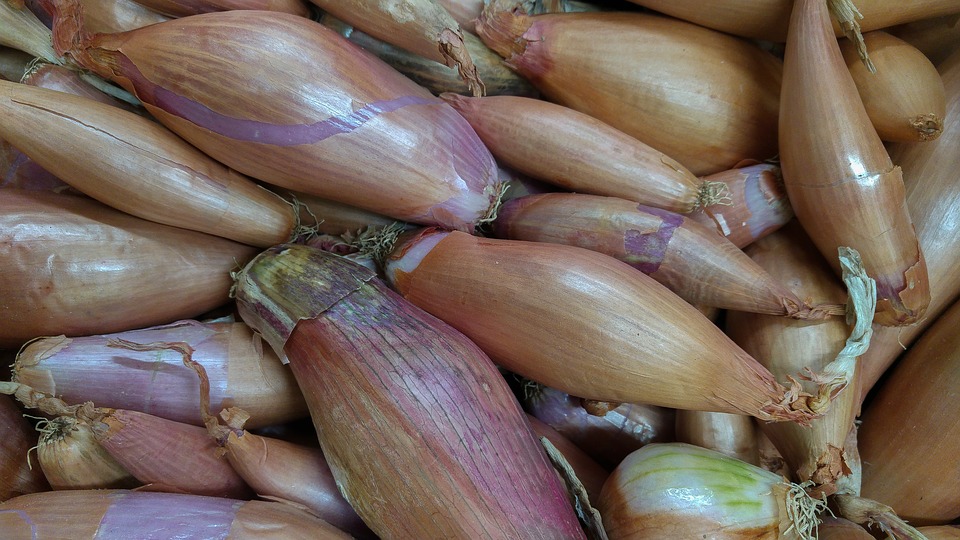
In general, it takes around 60 days to 120 days to grow shallots. If you are ready to learn how to grow shallots, do you have the time to spare those times to grow them.
And how do you know that those shallots are ready to pick? The plants’ green start to die, fall over, or wither.
In the meanwhile, the bulbs start protruding (from the soil) and its outer skin would be papery.
Planting Shallots from Seed
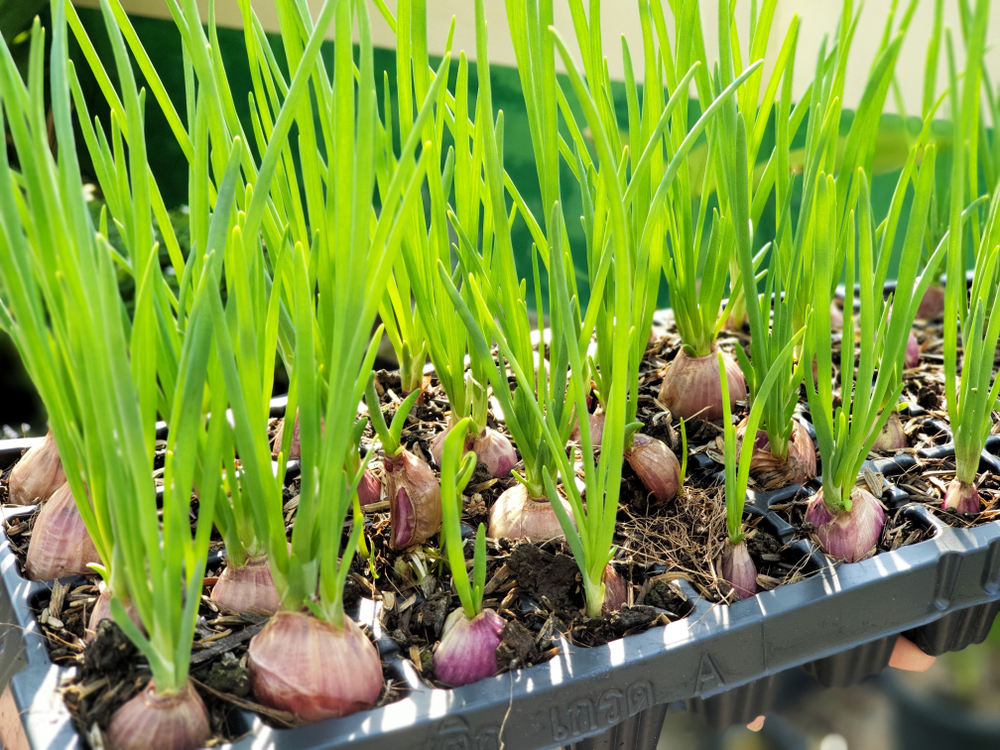
You can always grow shallots from seeds, which you can buy from grocery store or flower grocery.
Keep in mind that shallots need fertile and well-drained soil. It also needs full sun. The ideal soil condition is the one with pH 6.0 to 7.0, such as sandy loam soil.
If your backyard has heavier soil, it’s advisable to grow them in raised rows or raised beds to promote (and improve) soil drainage.
Consider having them in spacious space if you want to grow layers of bulbs. If you keep them in close spacing, they will likely form single bulbs.
Basically, you can grow shallots from seeds or sets (small shallots). The varieties from seed can produce around 3 to 4 per shallot (per plant).
But shallots produced from sets typically grow to a relatively dense nest of (at least) a dozen or even more shallots.
This is especially true in areas with mild winter because you can plant the shallots in fall, so they can grow through winter.
So, how to grow shallots from seed? You can start from March or April, although some people may even start from early May. Sow the seeds around ½ inch (or around a centimeter) deep within rows of 12-inch (30 centimeters) apart.
Thin seedlings (to anything) from an inch (2.5 centimeters) to 3-inch (7.5 centimeters) apart, depending on how big you want the individual shallot to be. Thin to 2-inch apart may produce the highest yield, but thin to 3 or 4-inch will produce bigger shallots.
If the weather is dry, water them. See any flower spikes? Remove them as soon as they appear.
A lot of people prefer planting the shallots from sets because they will mature quicker than growing from the seeds. Sets are immature bulbs; some people may refer it as seed bulbs.
If you live in colder areas or your garden has bigger chances of diseases (or pests), then growing shallots from the sets would be more ideal.
Not to mention that sets aren’t as ‘fussy’ as those from seeds. But don’t let it hinder you. Feel free if you want to try it from the seed.
How to Grow Shallots in Water
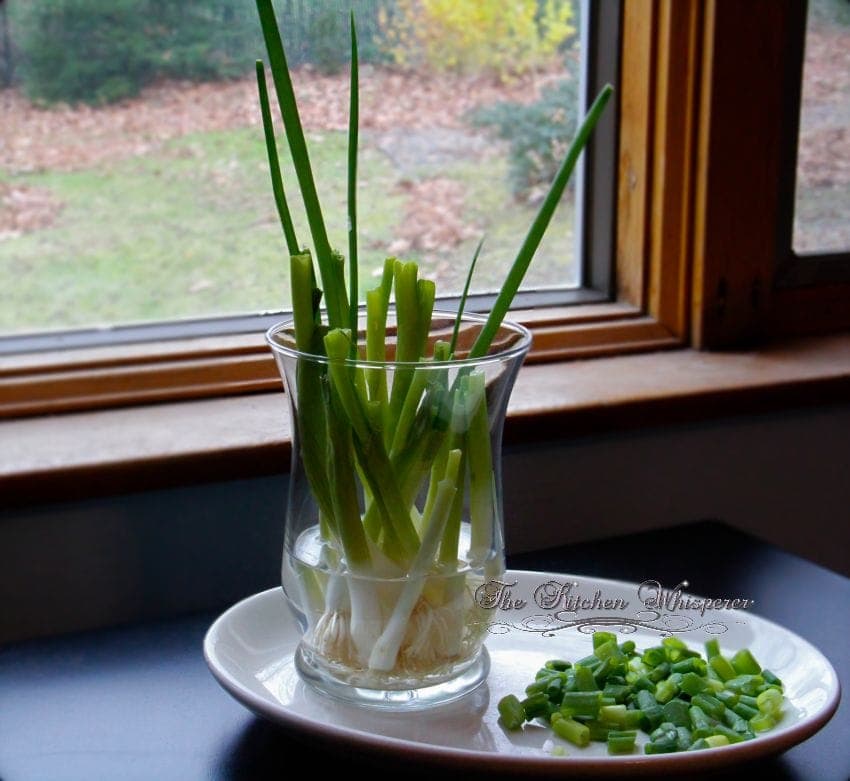
Knowing how to grow shallots in water can be handy, especially if you have those forgotten leftover in the pantry. However, such a way may not be applicable for all types of shallots.
What we are going to discuss next is the green onion. Feel free if you want to do your own experiment with whatever types of shallots you have, but the following methods are applicable to the already tested green onion.
As it was mentioned before, if you have any forgotten onion in the kitchen or the pantry, you can always try regrowing the roots (in water).
And then you can grow it to seed, and make it a houseplant. If you see smaller green onions, they are onions that have been harvested before the bulb can mature.
Feel free to repeatedly regrow the small green portion in water. You can also grow the roots and then plant it, growing the bulbs to reach maturity.
How to do it?
- By using a pair of scissors, trim the old roots so they would be close to the bulb. Try to make it as close as possible. If there is any remaining (green) portion, cut it off so you only have small bulb remaining.
- Put the onions in a clear jar (or glass). The root end is facing down. Add water; just enough so the bottom side of the container would cover the roots and also bottom part of the bulbs.
- Change the water once every two days
- Place the glass container in a window having a lot of filtered sunlight. If you do it properly, you will see new roots growing in several days, along with green stalk. After the roots have reached around an inch in length, transplant the onion to a potting mix (which is well-drained). Trim the green stalks back as you need if you want to make salads or other dishes.
How to Grow Shallots in Pots
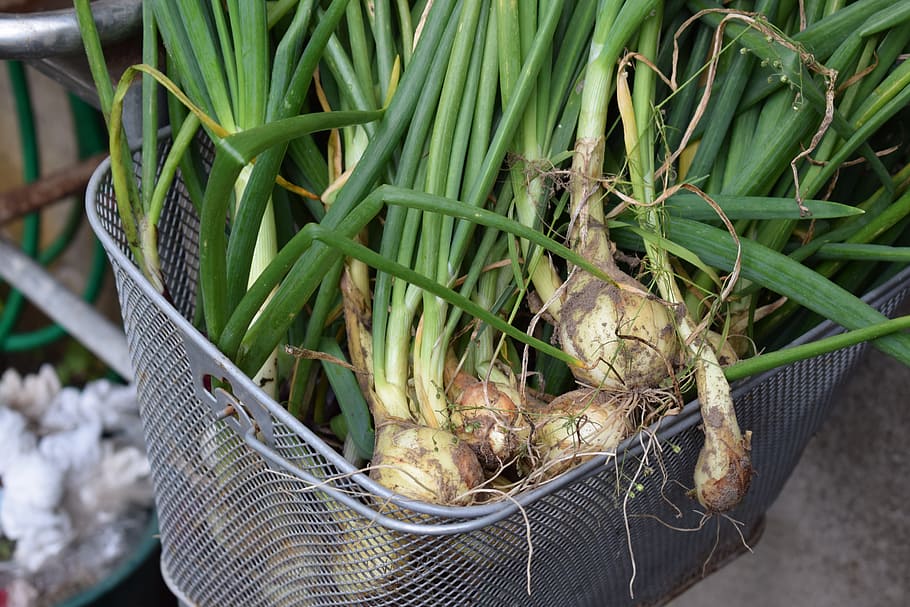
Shallots grow well in the (outdoor) garden, but if you consider planting them in pots, you should be able to do it too. After all, they are pretty versatile and easy.
Make sure that you prepare containers (with drainage holes) or well-drained potting soil if you want to know how to grow shallots properly.
Don’t use the ordinary garden soil because it won’t be suitable for container gardening. Buy commercial potting (soil) mix. If you want to make one, mix a part of Perlite, a part of Sphagnum peat moss, and a part of sterilized garden soil.
How to sterilize the garden soil? Put it in a glass container (preferably a glass pan) and put everything into the microwave. Let it for around 15 seconds to 20 seconds.
What should you prepare to grow the shallots in a pot?
- Choose containers that are wide and tall enough. You should be able to put the shallots in 6-inch deep and around a foot wide. If it is wider, it is even better!
- Make sure that those containers have proper drainage holes
- Choose containers from metal, plastic, or clay. If you want to pick the wood type, you can do it, but make sure that it is rot-resistant type, such as cedar or redwood.
- For every homemade potting soil bushel, add around ¼ cup of super phosphate and ½ cup of dolomitic limestone. Just for your information, you can also plant potatoes in the same manner (using containers or pots), but the containers must be at least 24-inch tall and 15 gallons.
Shallots grow well in dry condition and full sun setting. Make sure that you place the pot within a spot that gets a minimum of 6 hours of sunlight every day.
When the soil is dry, water it, up to an inch depth. Pour the water slowly until it comes out from the drainage holes. Once it happens, stop. Otherwise, you may rot the shallots.
They don’t need a lot of water really. An inch of water per week is usually enough. However, if you live in dry and hot regions, you may want to do it on a daily basis.
You can fertilize them from the early springs. Do it until the bulbs start to swell. Apply 24-8-6 diluted liquid fertilizer.
The ration should be ½ teaspoon for 2 gallons water. If you use different products, make sure you follow the recommended rate and directions.
Once you have harvested the shallots, you should be able to save small ones for the next year planting season.
How to Grow Shallots from Scraps
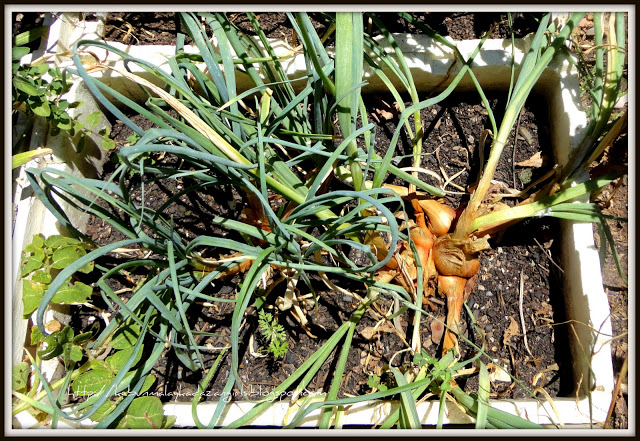
What does it mean ‘growing shallots from scraps’? Well, have you purchased a pretty bunch of shallots and then you realize that there are their remains, ready to rot or waste?
Don’t throw them away just yet because you can actually regrow those shallots. Trim the white stem (take it around 4 centimeters or 5 centimeters) above the roots and your shallots will regrow. The good thing: You don’t need to buy them anymore!
Now, you can put those stems in the water. Yes, it uses the methods how to grow shallots in water.
Once you put them in the glass water, put it in a well-lit area. But make sure that it gets enough of sunlight on a daily basis.
Don’t be surprised if you start seeing the re-shoot stems in several days. After it is long enough, you can start making use of it. Easy-peasy, right?
How to Grow Shallots Indoors
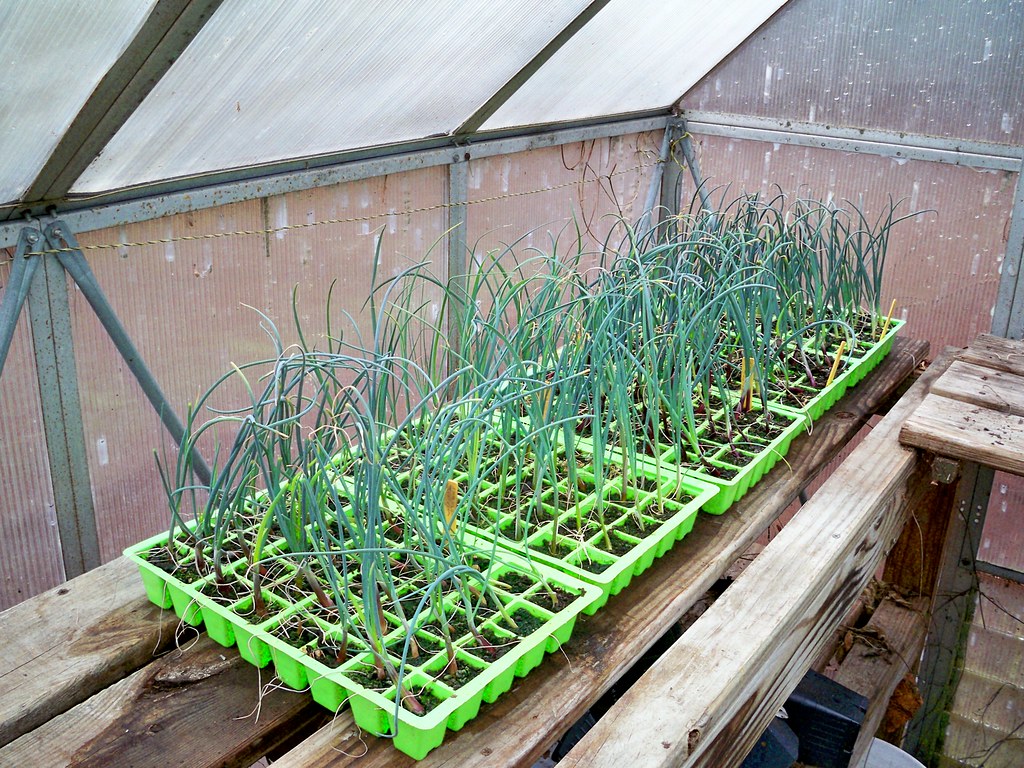
When you want to know how to grow shallots indoor, the principle is just the same as using the pots. It’s pretty reasonable, considering that you only need to use pots when growing indoor.
If you growing outdoor, you simply use the soil bed, right? You can make use of container indoor backyard, which means that you can place the container at your backyard patio or deck.
Just make sure that the container gets enough sunlight exposure and you keep it hydrated enough.
How to Grow Shallots from Cuttings

Knowing how to grow shallots from cuttings is basically similar to growing it from scraps. The idea is to use the leftover or the remaining part of the shallots so you can regrow it.
When you use the shallots, you typically cut the white parts down, right? Try to cut it as close as possible to the roots, but don’t throw away the roots. If you don’t want to plant it right away, save it in the fridge’s drawer.
A friend of mine always keeps her roots until she has at least a dozen so she can start planting them or doing experiments with them.
How do you manage the way?
- Choose a container. Any leftover or used container will do, but make sure that you have disinfected and cleaned them. To disinfect it, you only need to fill it with hot boiling water for around 5 minutes and you are good to go. Leave it dry (or you can dry it completely) and it’s ready to use. It’s advisable not to use cleaning bottles or containers that previously contain chemicals. Would you seriously want to grow your (supposed to be) healthy food inside of THAT? Something that has chemical stuff in it?
- Fill the container with soil. As the previous method, go with commercial mix or make your own.
- Insert the cutting into the soil. Press with your fingers to make sure that it is firmly stuck into the soil and it isn’t loose.
- Place the container in a sunny area. Some people are able to find spots offering at least 6 hours of sun exposure and the remaining cool shades afterwards (or before is also okay).
What if you want to grow them in the garden? First of all, you should need to understand their nature before you learn about how to grow shallots.
They rarely set seed or flower, so your only way to grow them is by using the immature bulbs or previous year’s sets.
As it was mentioned before, you can actually grow them from seeds, but aside from a more complicated growing system, seed is pretty costly.
A lot of homeowners often think ‘Why would I pay if I can make use of the kitchen’s leftover?’ So, if you want to make use of the remaining cutting or scraps, you only need to separate the bulb.
Plant every one of them just below the surface of the soil, and make sure that each is at least 4 inch apart. The pointed end should face up.
Keep in mind that shallots need more room – when compared to garlic.
Some people prefer leaving the shallots on the ground instead of harvesting them.
This action can re-sprout the shallot. Be advised, though, that the quality isn’t as good as those being dug up and re-planted.
If you want to produce good quality shallots, it’s better to harvest the shallots, save the best bulbs, and then replant them in the spring or fall. Every bulb generally produces many new bulbs.
So, once you are quite successful in planting and growing the shallots, you may never need to buy shallot sets (or seed) anymore.
Growing Shallots Inside
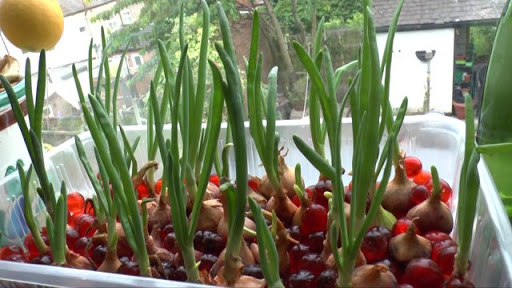
The principle of how to grow shallots inside is just the same as growing them indoor or with containers (or pots). Use specialized commercial soil mix.
Make sure that the soil is deep enough for the shallots to be fully covered with it.
Be sure to place the container in places where your shallots can get enough sunlight and also water. Basically, the combination of enough water and sunlight should be enough to grow them well and healthily.
Now that you already know the proper ways on how to grow shallots, are you ready to start?